Samsung Galaxy Note 3 Review
by Brian Klug on October 1, 2013 9:00 AM EST- Posted in
- Smartphones
- Samsung
- Mobile
- Android 4.3
- galaxy note 3
S-Pen
I was a tablet user for just over 4 years, but when I mean tablet I mean the old school kind with an active digitizer and Windows, before the age of capacitive multitouch everywhere. With the original Note, I was excited to see active digitizer finally represented again in a mobile device, complete with all the hover and pressure features that come with it. I still find it impossible to use styli on capacitive panels since they lack the resolution and fidelity for the kind of writing I used to do.
With the Note 3, neither quality of the digitizer nor the S-Pen formula change, and that’s a good thing. It’s still the same pen, and from what I can tell, still the same sensitivity and hover distance, and still Wacom based as well. I’m not going to go super in-depth with S-Pen since by this time it should be something readers are familiar with since we’re on the third iteration of Note (and multiple tablets) with the pen.
The Note 3 stows the pen inside itself in basically the same spot as its predecessors, and has the same pen-removal detection and single button on the pen itself. I have no complaints with how it feels or my ability to hold it and write on the screen, and the Note continues to do wrist rejection very well so you can rest your hand on it for making fine grained drawings with a bit of added support.
Perhaps the biggest single improvement with the Note 3 from the perspective of the pen is that it now triggers the menu and back capacitive buttons on the front of the Note 3. I found it confusing on the Note 2 and Note that with the pen out I had to switch between this weird finger and pen modality, rather than be able to accomplish everything with either appendage. With the Note 3, it’s now possible to do just that – it sounds crazy but that single change is the biggest thing that made me instantly happy with the Note 3 the second I pulled the pen out, just being able to hit menu and back with the stylus and have it actually work finally.
With the Note 2 I started to feel like the features that surrounded the pen were getting overwhelming, and I wasn’t sure what feature I should be using at a given time. There’s definitely feature creep each generation as things get added but never really removed, with the Note 3 Samsung does a great job mitigating most of this by surfacing what they believe are the standout features of the S-Pen experience in a popup dialog with a ringed interface and shortcuts to functions. Previously removing the pen would jump you to a special homepage with relevant links if you were on a homepage. Instead if you pull the pen out, this new overlay appears. The overlay makes a lot more sense and has helped me use the pen a lot more than I did previously.
I remember joking with another reviewer that I suspected a large number of Note owners used the pen once, put it back, and never really bothered or understood it after that, and instead were just after the Note for its large display. That sort of mirrored my own use with the Note previously since I’m not artistically inclined or sitting in lectures writing down equations and graphs and diagrams as fast as I possibly can anymore (though soon that hopefully will return with grad school). With the Note 3 and this new interface also shared with the Note 10.1 2014 edition I’m using the pen a lot more since it’s a reminder of what’s really handy.
The ring switcher has shortcuts to action memo, scrap booker, screen write, s finder, and pen window. You can also get to this switcher by hovering and pressing the button on the pen.
Action memo pops up a sticky note that you can immediately start writing on, and it’s the most useful honestly. These notes can then be transcribed on the fly and used to either create contacts or events or look at a location in google maps. The idea is that you’d quickly jot down a phone number and name, or an address, and then be able to act quickly on them or save it for later. I find this works surprisingly well. Samsung says their handwriting transcription engine is also even more accurate this generation, but I don’t have specifics.
Scrap booker lets you grab content displayed on the screen and store it for later, this seems to also parse what’s in a view and intelligently take metadata along with it, for example web pages, YouTube videos, and maps will all get pulled along.
Screen write is a perpetual favorite, it takes a screenshot that you can then annotate or draw on top of. Handy and useful if you need to send something with a pithy remark or drawing to someone either for work or play.
S-Finder is a universal search function that parses through all your notes and memos and writing for a string entered in the search bar. Samsung is always transcribing notes so they’re searchable, this surfaces everything including those hand written notes. I’m reminded of how OneNote search worked, very useful if you’re taking a lot of notes.
Pen window is like a new version of multi window, except instead of snappable windows it’s a viewport of arbitrary size matching roughly what you draw on screen. In practice though the windows are the same aspect ratio as the display (16:9) just whatever rough size you’ve drawn the square and scaled to fit. Samsung continues to try and solve the multi-window problem and admittedly does a novel job here given the constraints of the Android platform. Not every app can be put in one of these smaller windows, rather a subset of the multi window applications.
S Note and the other applications that I remember being present on the Note 2 are still around, as well, it’s just this smaller subset that’s exposed and promoted through the ring switcher. Of course you can also disable the action switcher menu and have pen detachment launch action memo or do nothing at all.
I think S Pen is novel, and what’s important to me works well (the equation parsing engine is supposedly even better and worked with what I fed it), I’m just more sold on the Note as a platform because of screen size than I am note taking. Although the Note 3 doesn’t have the killer third party app attention that draw something had with the original Note, there is Snapchat and a variety of others though that might make the S-Pen a very attractive thing for people looking at the Note for something beyond note taking.


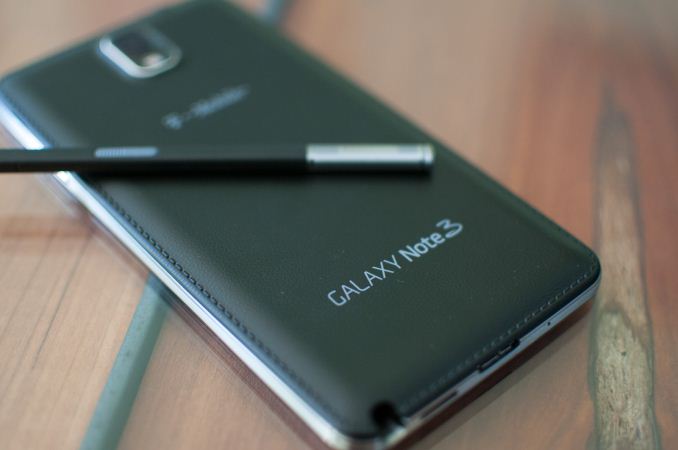

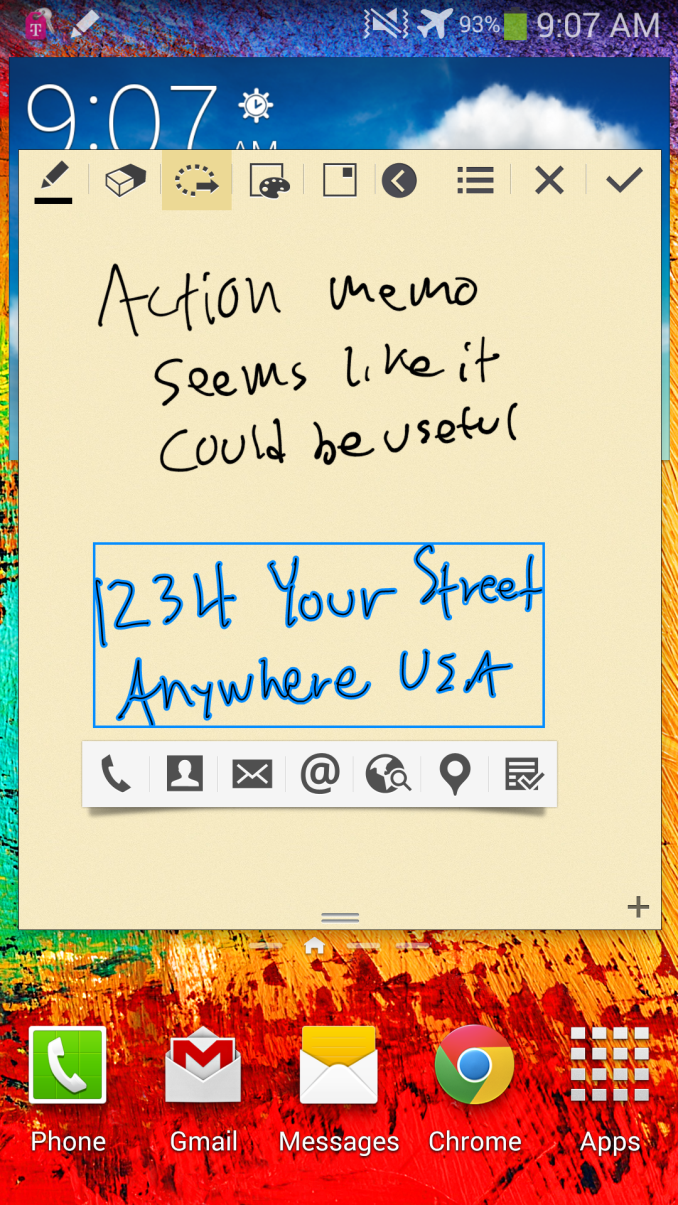

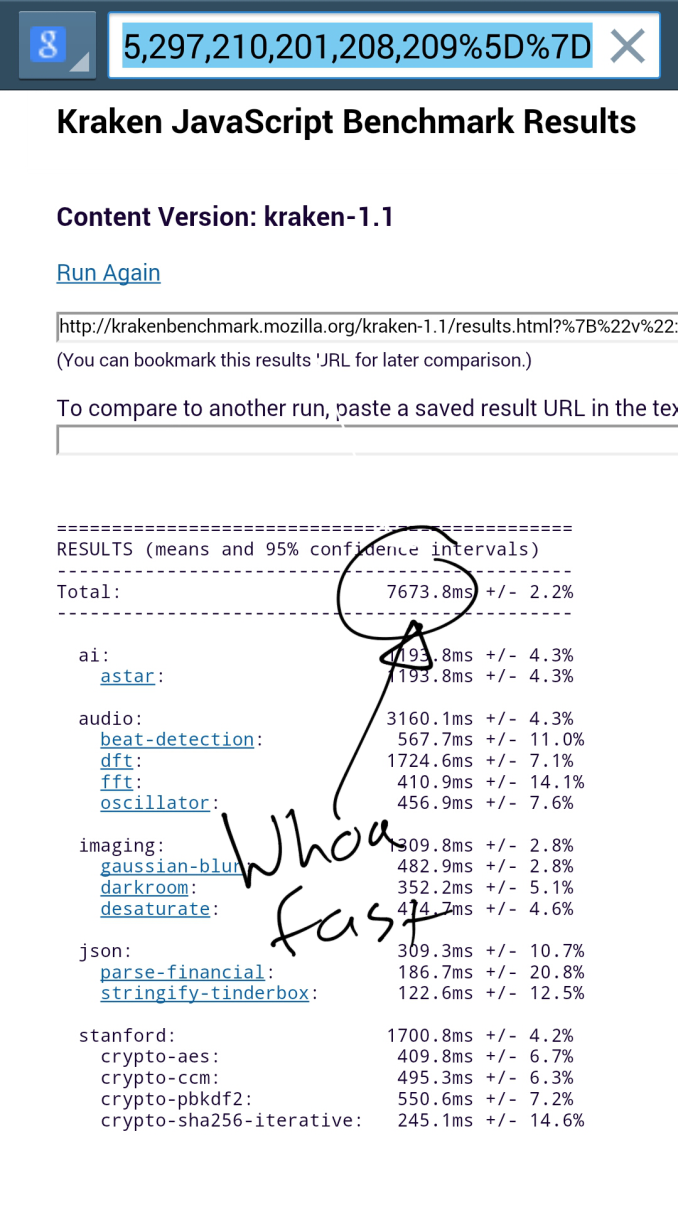
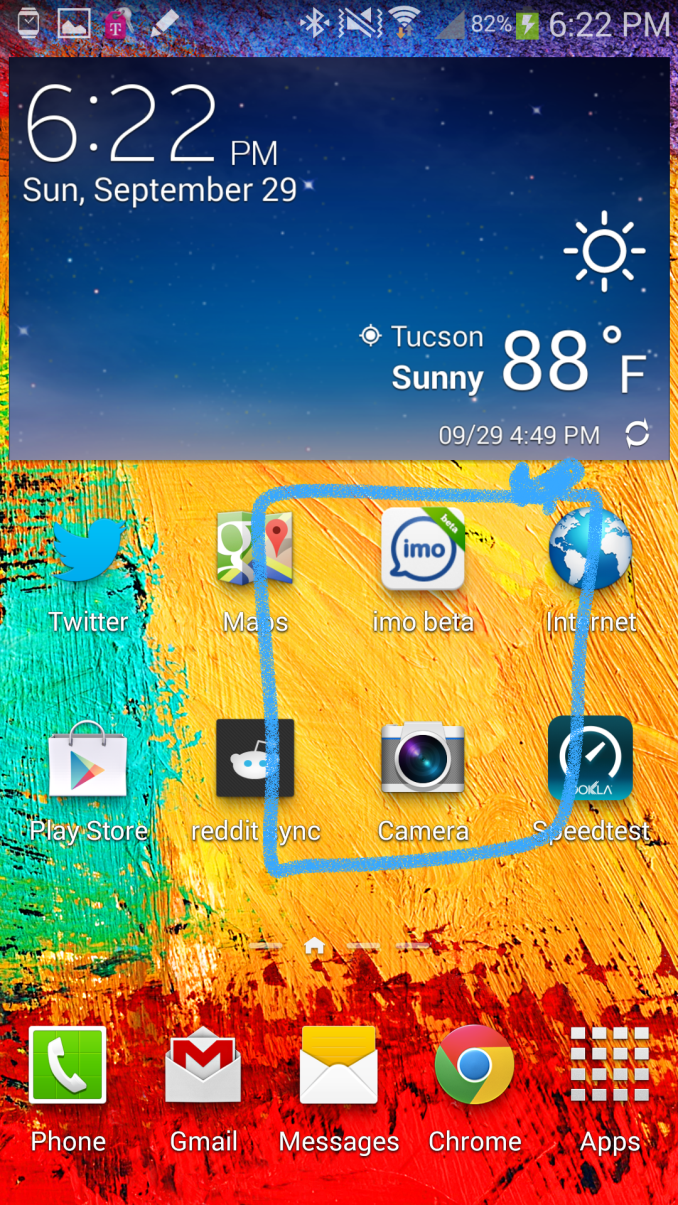
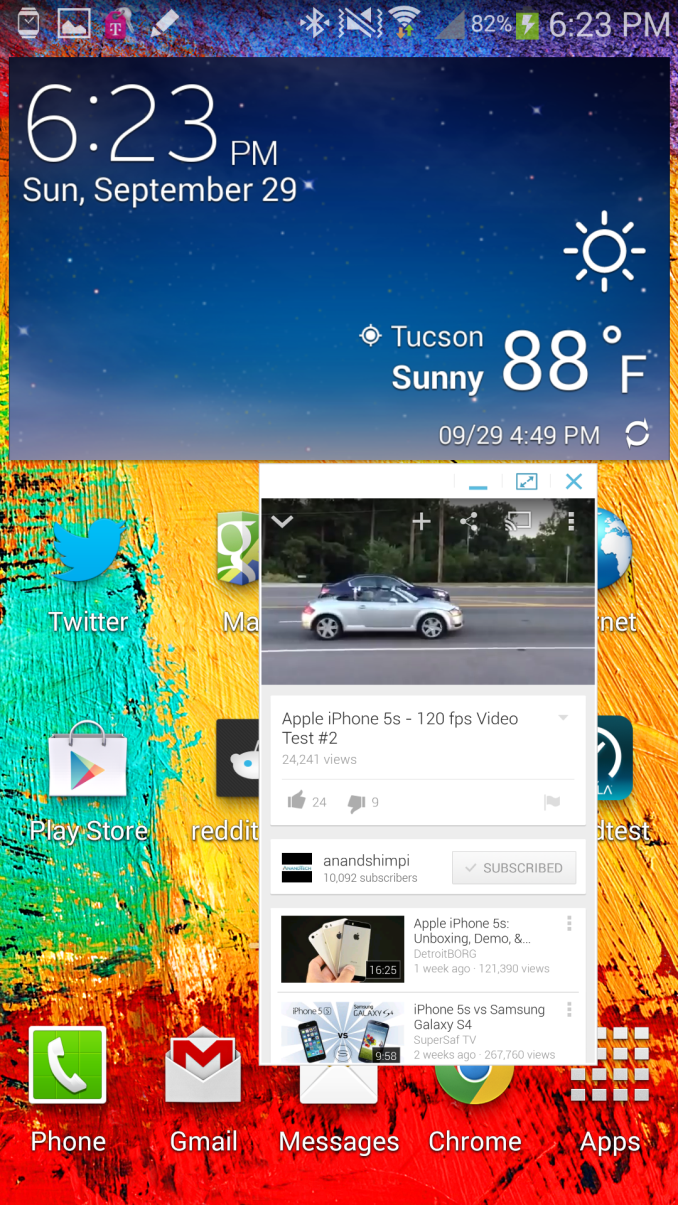
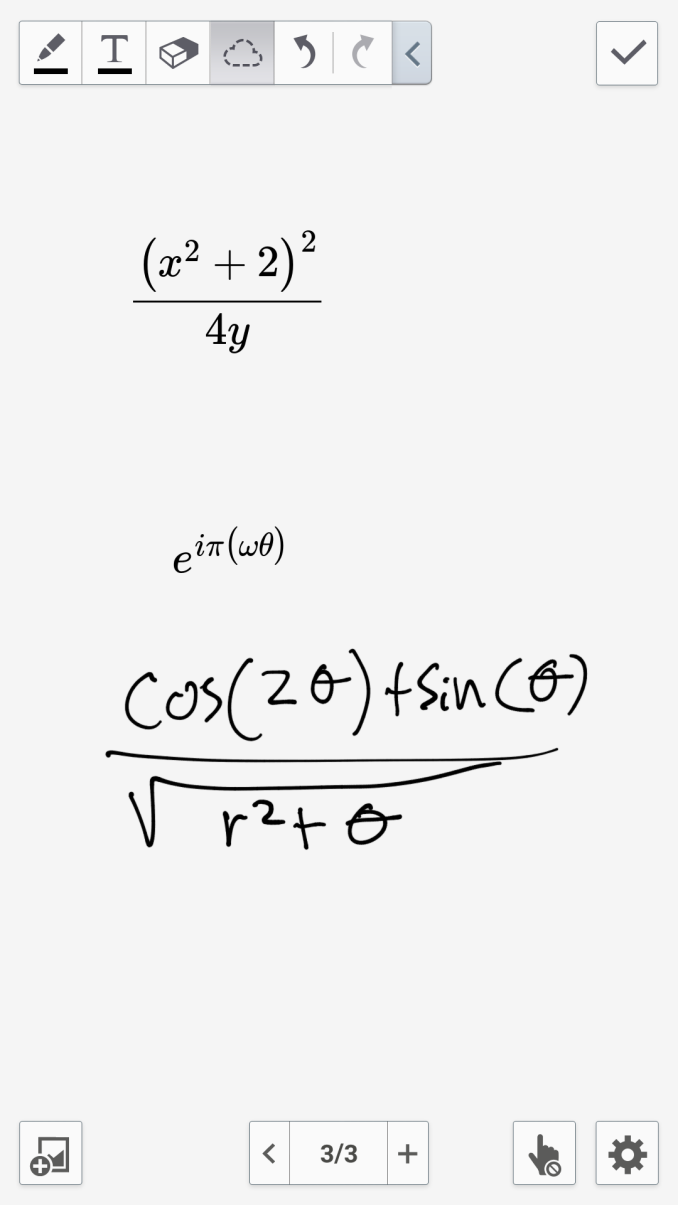
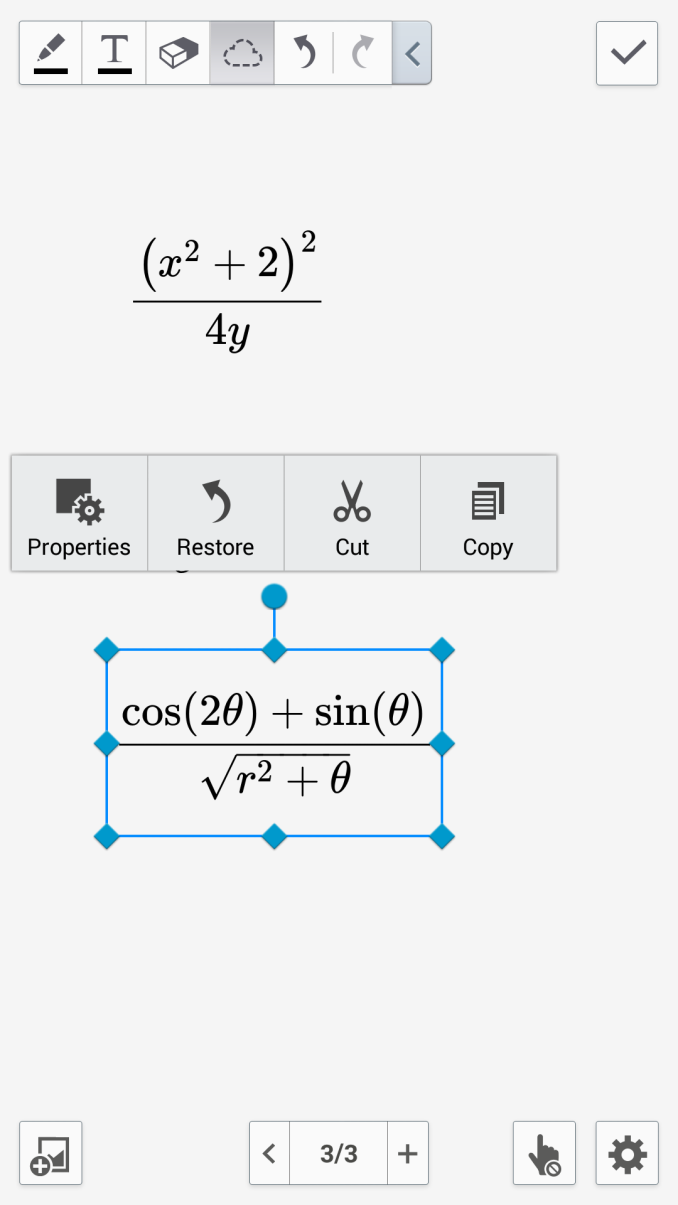








302 Comments
View All Comments
smartthanyou - Tuesday, October 1, 2013 - link
Struggling? I don't understand. They are cheating, it seems simply enough of a concept to me. The fact that others are doing seem irrelevant.If you a review a product that is doing this shine a big bright light on it. You might also consider calling out other reviews of the same product that ignore the problem.
vFunct - Tuesday, October 1, 2013 - link
A simple repackaging of benchmark tests so that they can't be detected by Samsung would do. At this point just assume that all vendors cheat, and set up your benchmark suites so they aren't detected.We want to know how these products act in the real world, and benchmarks are supposed to represent that.
We don't want fake results.
itpromike - Tuesday, October 1, 2013 - link
Anand, what Ars did to circumvent the benchmark fluffing was recompile the application with different package names... could you do something similar, then re-run your benchmarks and update this article? Or are your benchmarks already circumventing the fluff?DERSS - Tuesday, October 1, 2013 - link
Do not struggle over this. Put an asterisk at SGN3 results with note that in reality (versus overdrive mode for test) this device is not any faster than LG G2. It would be fair; problem solved.dugbug - Wednesday, October 2, 2013 - link
Yeah I've wondered if geekbench will respond similar to the juicing debate among baseball statistics nerds. Do they purge the benchmarks... or placing an asterisk.... or just nothing. Let specs chasers live in a weird little unaware lie.Voldenuit - Tuesday, October 1, 2013 - link
"We've been struggling with how to deal with this one for a little while now."Easy. Rename article headline to:
"Shamesung Galaxy Note 3. Cheaters Never Prosper".
Also, put a strikethrough on all the Samsung benchmarks.
bji - Wednesday, October 2, 2013 - link
You should ask that the benchmark authors make their tools harder to cheat on. The should randomize the name of the benchmark program at installation time or something, similarly with whatever values are necessary to be randomized to prevent the benchmark from being detected as a benchmark by the cheaters.Obsoleet - Tuesday, October 8, 2013 - link
I've seen a lot of unprofessional stuff going on at AT, regarding Nvidia and Intel for years. I have no skin in the game regarding Samsung, the Note3 or anything else but I really find this to be the last straw. I actually use a GS3.I'm done reading your site, Anand.
Call it cheating. That's what it is, you know it. What is your problem? How can we trust you or your staff??? Wake up and stop taking bribes, or whatever is causing you to do this kind of crap.
Chillin1248 - Tuesday, October 1, 2013 - link
I agree.As an extremely long time Anandtech reader, I am very disappointed that they decided to run the benchmarks with the "boost" in place instead of trying to figure out how to disable them (like ARSTech) or waiting for a workaround.
These benchmark results should be re-run with ARSTechnica's method in place of the artificially inflated scores we have now here.
Squuiid - Tuesday, October 1, 2013 - link
+1. You are essentially offering a more favorable review with inflated benchmarks and actively encouraging this deception. It's no wonder Samsung continue to cheat.